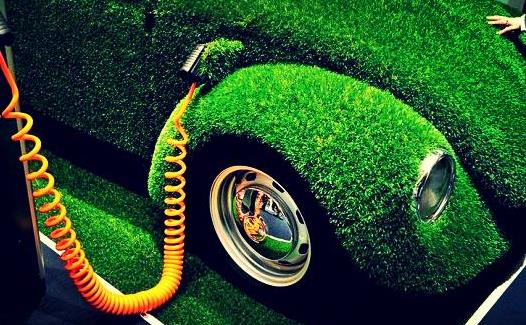5 Go Green Landscaping Tips
By Vigilant Plants in Industry News, Landscaping in NC, Lawn Care Tips with No Responses and 669 Views
Go Green This Fall!
Going green isn’t just a term to describe the color of your plants in the springtime. It’s also a term that can be used to describe landscaping habits that help create a sustainable and ecofriendly environment. Plants and trees are inherently good for the environment, as they convert carbon dioxide into oxygen, but here are five green landscaping tips!
1. Xeriscaping
This strange word refers to designing and choosing plants for your yard that will create a low-water landscape. The most effective way to do this is to pick plants that are native to North Carolina. Native plants are more adjusted to our climate and thus will not require as much water as non-native plants. Some native plants of the south include the hardy hibiscus, indian pink, and crested iris.
2. Morning Watering
Speaking of water management, another great way to conserve water is to know that the best time of day to water your lawn and plants is in the morning. In the morning, it is more likely that your water will reach the roots of the plants, where it needs to be. In the evening, much of the water will evaporate before it does its job! Whatever you do, DO NOT water in the middle of the day. Not only will this be an ineffective time to water due to evaporation, but in high-sunlight water acts as a reflector and magnifier and will scorch your grass and plants.
3. Strategic Trees
Trees are for more than just climbing! Plant deciduous trees to provide shade to that can help cut down on energy costs to cool your house. The leaves of deciduous trees fall off in autumn, but if you also plant evergreen trees, they can help block your house from cold winter winds. Using these two types of trees, you can cut down on energy use, which is good for the environment AND your wallet!
4. Reuse Grass Clippings & Leaves
A problem many of us face is what to do with our grass clippings in the summer and all the leaves we’ve raked in the fall. Grass clippings are a great source of natural fertilizer for your lawn, as clipped grass contains many nutrients that your grass can still use. Rather than bagging the clippings, leave them where they lie or spread them across your grass. As for your leaves, they can be mulched and composted! Chop them up and add them to the compost bin rather than bagging them up!
5. Rainwater Irrigation
Did you know that a 1-inch rainfall on a 1,000 square foot roof produces 600 gallons of water? If you can collect this water from downspouts, you can use it to water your lawn and plants!
Additional Resources:






You must be logged in to post a comment.